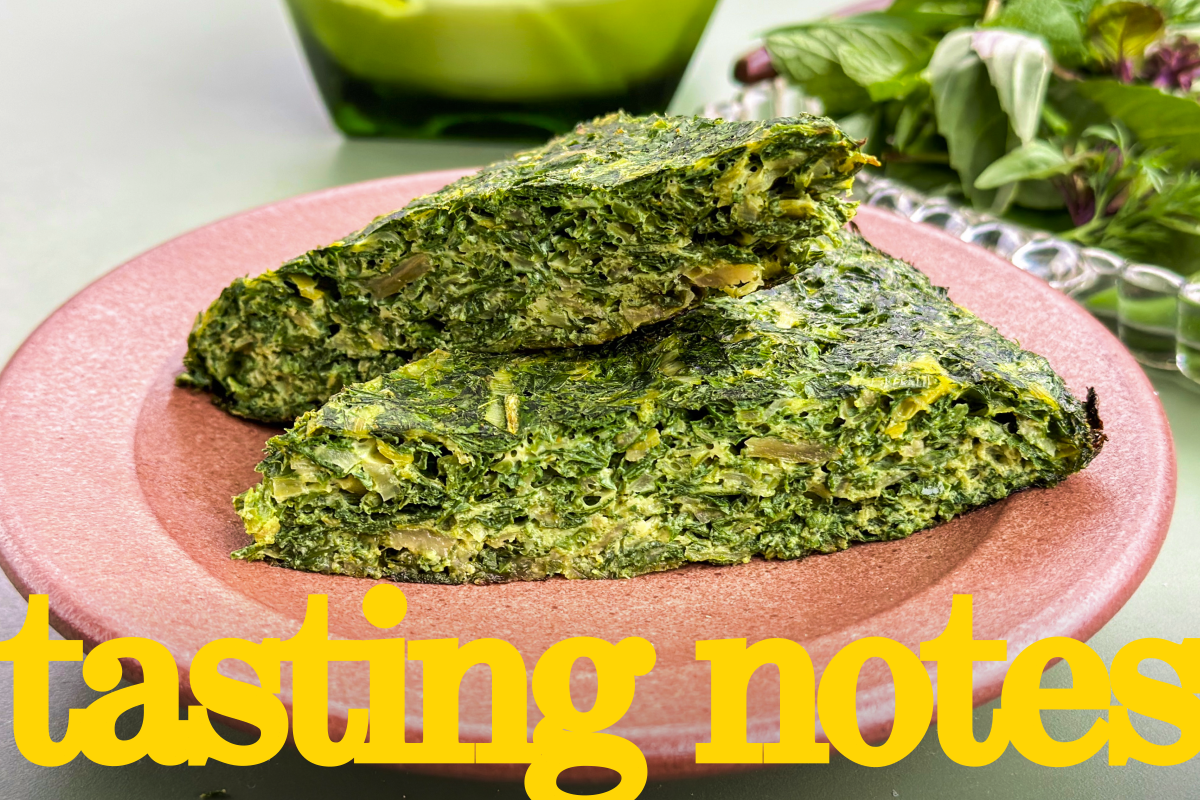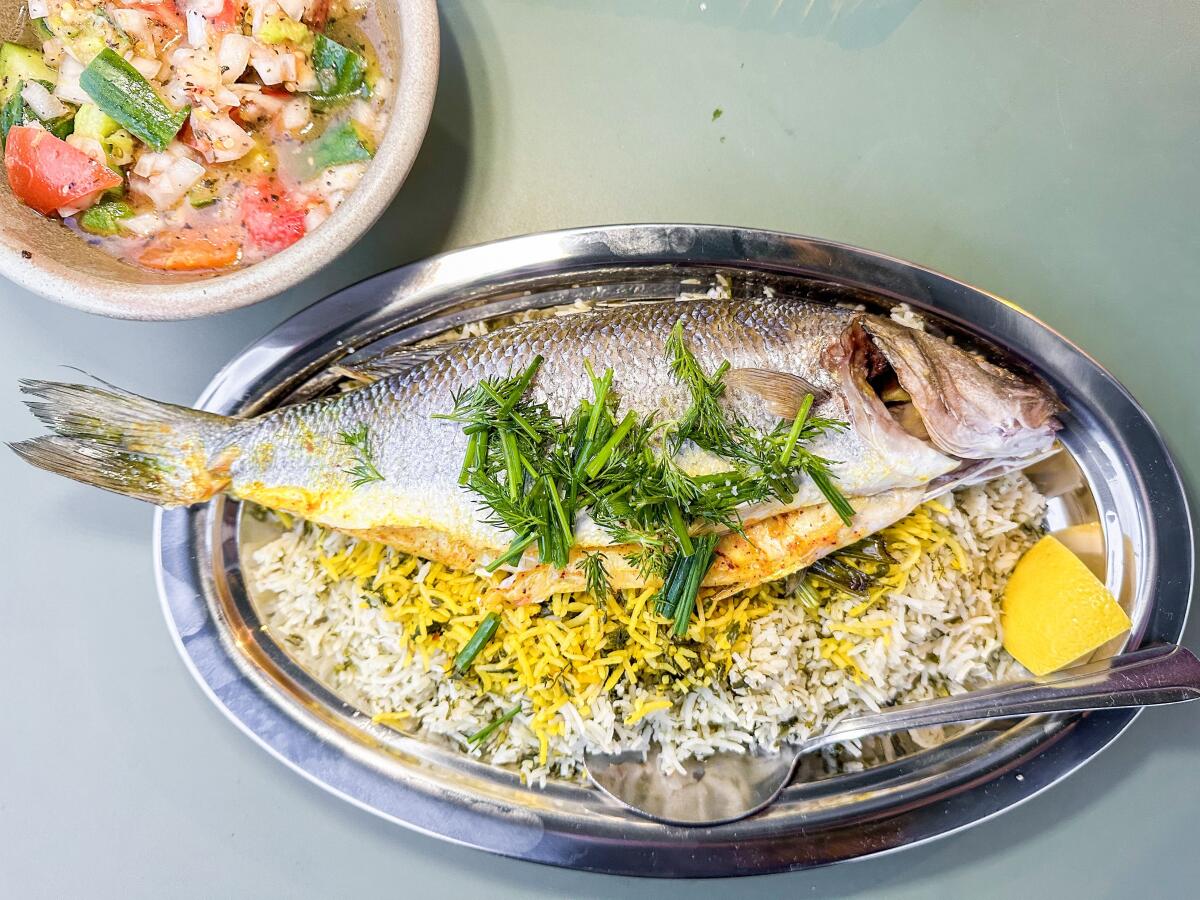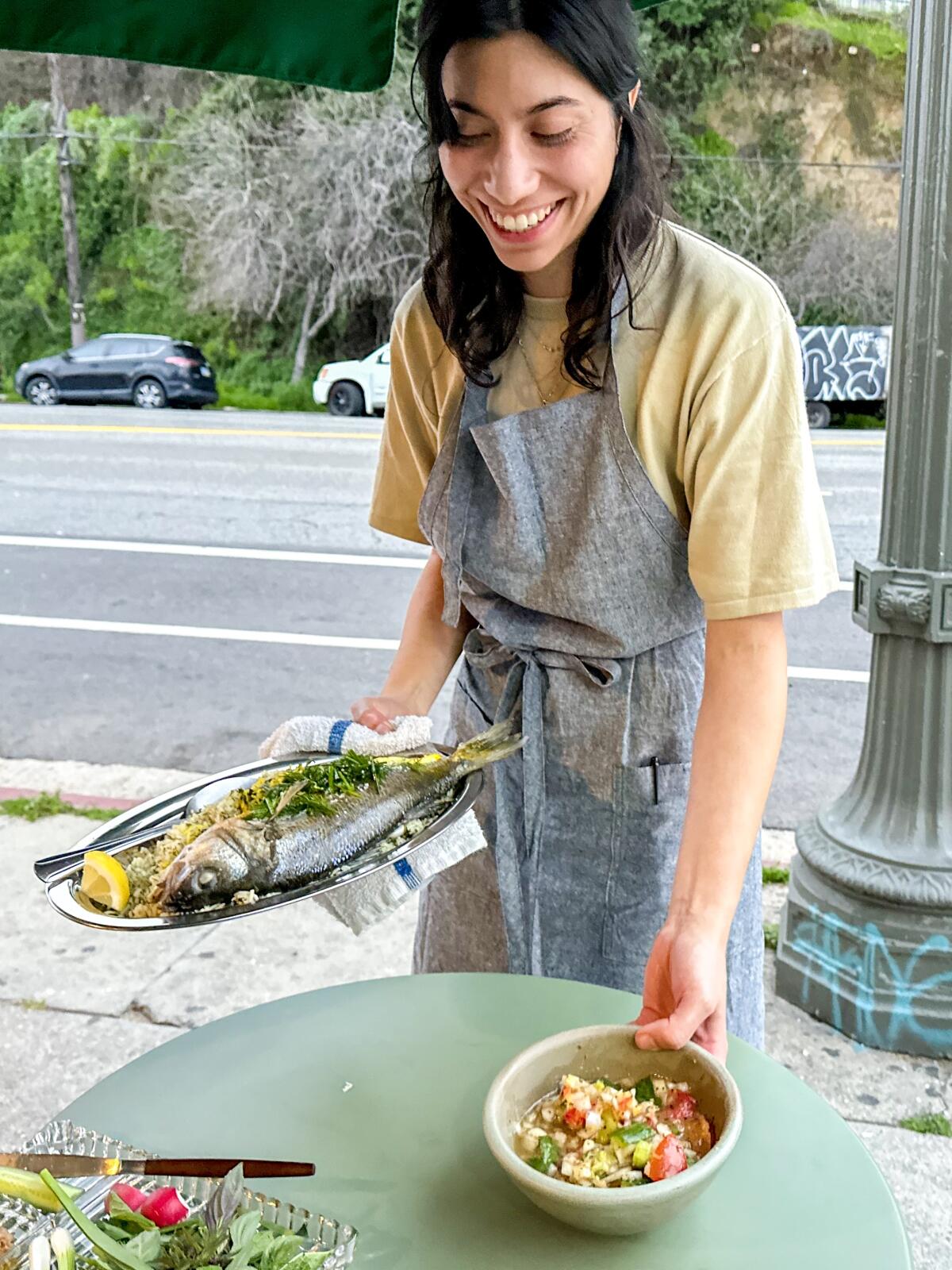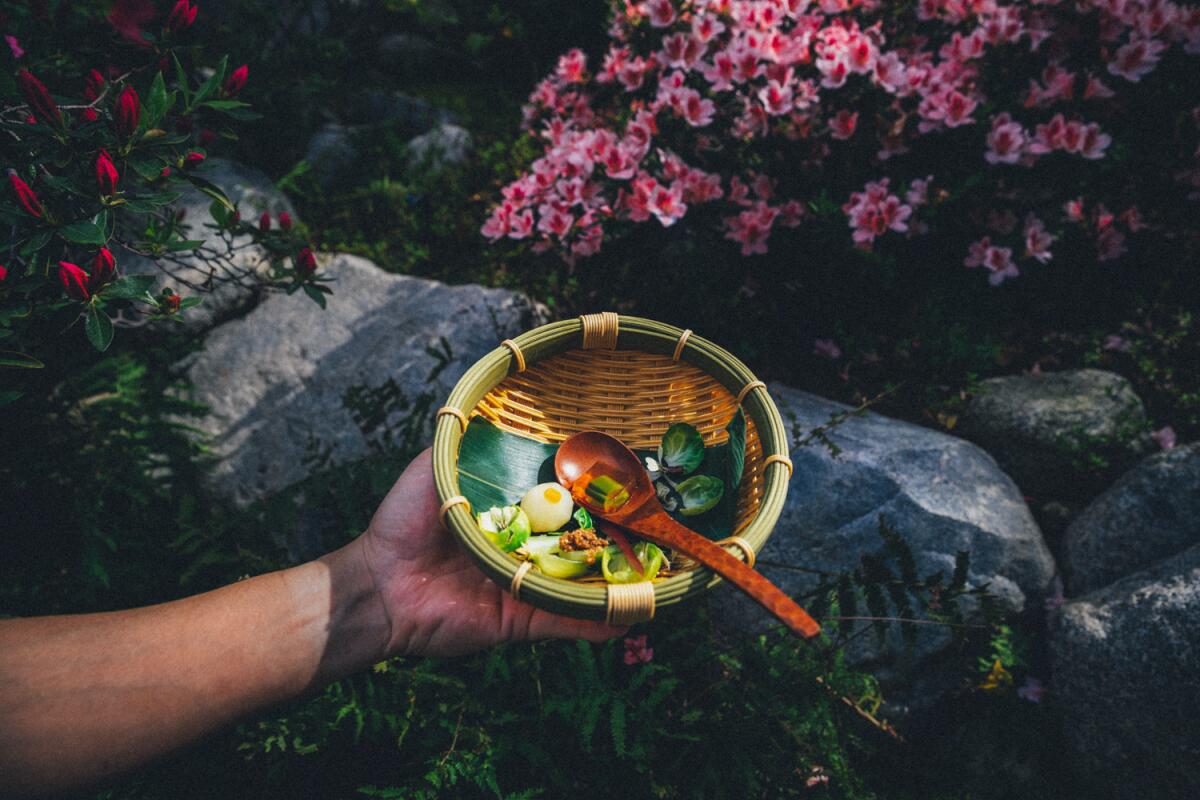A Persian pop-up’s menu can be distilled into three words: Not just kebabs

Spring’s green shades were a tonic saturating the dishes served at the Azizam pop-up dinner on Monday night, held in the space recently vacated by Konbi in Echo Park.
The meal began with sabzi khordan, a platter full of basil and other bunches of herbs with walnuts, radishes and a small rectangle of feta; deputy Food editor Betty Hallock and I snacked on them alongside freshly shelled fava beans and crusty barbari still warm from the oven.
Two triangles of baked kuku sabzi, one of my favorite Persian egg dishes, popped with dill, parsley and cilantro. Fennel greens added a licorice note to whole roasted branzino over herbed rice. On the side was more rice in the form of tahdig — the coveted crisped layer that forms on the bottom of the pot, this one golden and buttery and just crackling enough.
Even dessert slyly referenced chlorophyll. It was bamieh, a popular Iranian sweet made from piped dough that is fried and then soaked in syrup (it can be flavored in many ways; here sour orange added complex tartness). “Bamieh” is the Farsi word for okra; the ridges in the tiny doughnuts mimic the vegetable’s shape.
Enjoying this newsletter? Consider subscribing to the Los Angeles Times
Your support helps us deliver the news that matters most. Become a subscriber.
The delicious spread had been pulled from the traditional canon celebrating Nowruz, the ancient observance of the vernal equinox, rooted in Zoroastrianism, seen as the most important event on the Persian calendar. As with Easter and Passover meals, many of the foods served during Nowruz signify themes linked to a springtime sense of renewal and abundance.

Celebrating Nowruz
It was the second year that Cody Ma and Misha Sesar, who founded Azizam in June 2021, have presented a Nowruz feast as part of their pop-up. Last year they were still in carry-out mode; I savored then the soft, mulchy kuku sabzi, and the fish with perfumed rice I transferred from its to-go container to a platter, at home. Eating the meal they prepared out in the world was a different, more resonant kind of joy.
Azizam, which means “my dear” in Farsi, turns up every month or so. In the last two years, Ma and Sesar have appeared at Melody Wine Bar in East Hollywood, Brain Dead Studios on Fairfax and on nights at Pearl River Deli in Chinatown when the restaurant is otherwise closed.
Eat your way across L.A.
Get our weekly Tasting Notes newsletter for reviews, news and more.
You may occasionally receive promotional content from the Los Angeles Times.
By day, Ma is a manager at Pine & Crane and Joy, and Sesar is a director at an art gallery. The couple met at a party in 2016 through a mutual friend who knew they both had Iranian and Chinese parentage.
They were telling me the story in a recent interview. Ma started: “It’s pretty unique because we’ve never met anyone …”
“… with the same background,” Sesar said, matching Ma’s cadence and finishing the sentence.
Like many pandemic-era creative sparks, the idea for Azizam started with bread. Ma and Sesar lived in Alhambra at the time, and the drive to nexuses of Iranian restaurants and markets like Westwood and Irvine felt far in 2020. Sesar began making barbari, one of the essential flatbreads of the Persian table, and as she kept at it the pair decided to start exploring the regional differences in their families’ recipes. Sesar’s relatives come from Tabriz, a city in northwestern Iran with millennia of history. Ma’s mother moved alone from Tehran to go to college in Omaha, where she eventually opened a restaurant with a menu of Persian and Levantine dishes.
Ma and Sesar tinkered with kofteh Tabrizi, a soft braised meatball plumped with rice and seasoned with varying combinations of herbs, fruits and sometimes eggs that can be formed as big as a bike helmet. A modest-size version stuffed with dried stone fruits became one of Azizam’s staples.
Tasting the season in Persian dishes
Summer might bring kashk-e kadoo — a dip of roasted summer squash creamed with whey and garnished with mint oil, walnuts and fried onions — or borani kadoo, tomatoes and squash simmered in spices and served over yogurt. Both call out to barbari for swiping. A khoresh, or stew, of chicken and chunks of butternut squash scented with cinnamon can appear in the fall.
It’s the seasonality of the cooking that compels me to seek out Azizam whenever they announce their next pop-up on Instagram. The Persian culinary repertoire is vast and connected to the growing cycles. Most Persian restaurants in Southern California center around kebabs: As part of a deep dive into Persian restaurants in 2019, Naz Deravian and Andy Baraghani, both Iranian cookbook authors, told me that their California-based families went to kebab houses as a treat, but that the highly seasonal khoresh variations in which cardoons, rhubarb, sour cherries, peaches, apples or quince meld with savory ingredients largely remained the province of home kitchens.
When Ma and Sesar began Aziszam, they playfully included the hashtag #notjustkebabs in their posts to state their intention to bring dishes like khoresh more into a public space. Their goal is to eventually open a restaurant, which could bring regional and seasonal notions of Persian cuisine to a far wider audience.
For now keep your eye on social media. After Ma and Sesar finish their Nowruz celebrations — April 2, the 13th and final day of the festivities, is known as Sizdah Bedar and traditionally calls for a picnic outing — they’ll return with a spring menu for Azizam. It’ll likely include khoresh karafs, a stew that Ma’s grandmother made this time of year with braised chicken thighs, or sometimes lamb. I’m hoping for more kuku sabzi too.

Have a question?
More from L.A. Times Food
— Danielle Dorsey has 18 examples illustrating how museum restaurants are upgrading their culinary ambitions.
— Jenn Harris goes all in with the butter flight — think flavors of brown sugar, peach cobbler and crunch berry — with the chicken and waffles at the Court Cafe in Westchester.
— Journalism legend Linda Deutsch writes about the closing Hollywood haunt Off Vine, and why it matters to Los Angeles.
— Stephanie Breijo has the report on six new additions for Michelin’s 2023 update to its California-wide dining guide; three of them are in the Los Angeles area.

Eat your way across L.A.
Get our weekly Tasting Notes newsletter for reviews, news and more.
You may occasionally receive promotional content from the Los Angeles Times.



